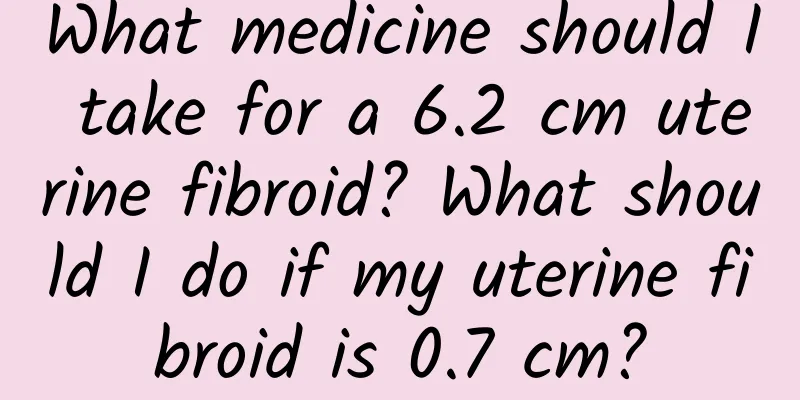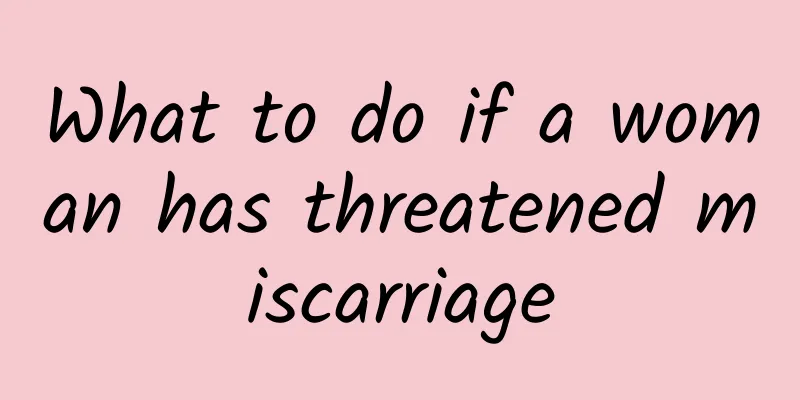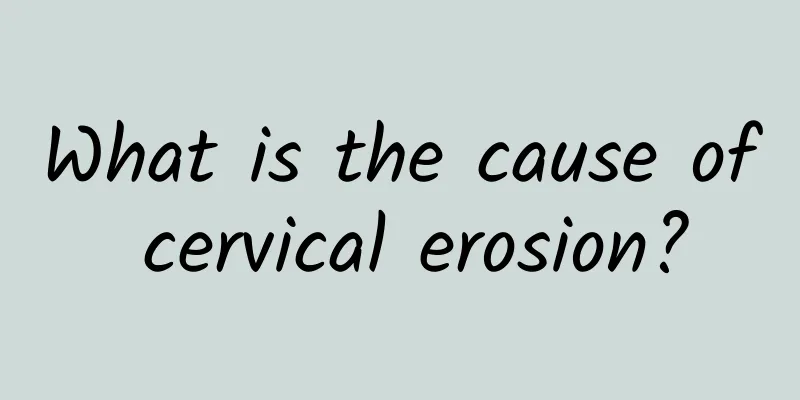What medicine should I take for a 6.2 cm uterine fibroid? What should I do if my uterine fibroid is 0.7 cm?

|
What medicine should I take for a 6.2 cm uterine fibroid? What should I do if my uterine fibroid is 0.7 cm? Suffering from uterine fibroids is a problem faced by many women, and the size and treatment of uterine fibroids are also the focus of public attention. This article will discuss a question about uterine fibroids: What medicine should I take for a 6.2 cm uterine fibroid? At the same time, we will also discuss another question: What should I do if my uterine fibroids are 0.7 cm? 1. What medicine should I take for a 6.2 cm uterine fibroid? Uterine fibroids of 6.2 cm are a relatively large size, so a comprehensive treatment approach is required. In terms of drug treatment, common drugs are those that promote hormone decline. These drugs can reduce the size of uterine fibroids by suppressing ovarian function. At the same time, these drugs can also relieve patients' symptoms, such as irregular menstruation, abdominal pain, etc. When choosing drugs, you should choose according to your specific circumstances, and it is best to treat under the guidance of a doctor. In addition to drug therapy, other treatment methods can also be considered. These include minimally invasive surgery, interventional surgery, and laparotomy. These surgical methods are usually suitable for patients with large uterine fibroids and obvious symptoms. Surgery can relieve symptoms and reduce the size of the tumor by removing the uterine fibroids. However, the risks of surgery are relatively high and need to be weighed according to the different patient conditions. 2. What should I do if my uterine fibroid is 0.7 cm? Compared to 6.2 cm uterine fibroids, 0.7 cm uterine fibroids can be considered as smaller tumors. In this case, immediate treatment is usually not required. Because 0.7 cm uterine fibroids usually have no symptoms and are not easy to be found during gynecological examinations. Therefore, regular observation and monitoring can be chosen to ensure that the uterine fibroids do not increase in size or cause other complications. However, if the patient has obvious symptoms, such as abnormal bleeding, pelvic pain, etc., or plans to get pregnant, then some treatment methods are needed. For patients who want to have children, they can choose drug treatment or minimally invasive surgery. For patients who are approaching menopause or do not need to have children again, they can choose postmenopausal surgery or interventional treatment. For uterine fibroids of 6.2 cm, drug therapy and minimally invasive surgery can be considered. For uterine fibroids of 0.7 cm, observation and monitoring is an appropriate choice unless obvious symptoms occur or there is a need for fertility. In either case, patients should actively communicate with their doctors to develop a suitable treatment plan. At the same time, pay attention to maintaining good living habits, such as a balanced diet and moderate exercise, which will help control the progression of the disease and reduce the occurrence of symptoms. |
<<: At what age do uterine fibroids usually occur? At what age do uterine fibroids usually occur?
Recommend
Why doesn't hydatidiform mole bleed?
Why doesn't hydatidiform mole bleed? The abse...
Menstrual cramps, headaches, insomnia... the best yoga pose ever to relieve autonomic nerves and relieve pain
Many women suffer from menstrual pain, abdominal ...
Causes and treatments of decreased menstruation
Causes and treatments of decreased menstruation: ...
How to prevent dysmenorrhea in women's daily life
Dysmenorrhea is a problem that many women will ex...
What are the symptoms of hyperprolactinemia?
Hyperprolactinemia has a high probability of occu...
Will there be any symptoms of ectopic pregnancy at 36 days?
Will there be any symptoms of ectopic pregnancy a...
What should you pay attention to before uterine fibroid surgery? What are the hazards of uterine fibroids?
Uterine fibroids are called the "first gynec...
What medicine should I take to treat irregular menstruation
What medicine should I take to treat irregular me...
Good contraception is the key to reducing the number of abortions
Women have more than 20 years in their lives to c...
General measures for treating uterine fibroids
The incidence of uterine fibroids has been increa...
Intestinal obstruction may lead to constipation and diarrhea, causing three major concerns! Eat the right fruits to improve smoothness
The key culprits for intestinal discomfort are ma...
How to prevent cervical hypertrophy?
If cervical hypertrophy is not treated in time, i...
What are the differences between biochemical pregnancy and spontaneous abortion?
Some women always have to go through some hardshi...
Etiology and pathology of pelvic peritonitis
There are many modern women who suffer from pelvi...
Is invasive hydatidiform mole a malignant tumor?
Invasive mole is a malignant tumor. Invasive mole...









